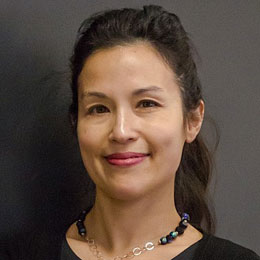Naval interaction as part of China-Russia strategic partnership
By Alexey Kan
The China-Russia's military drills called Naval Interaction 2017 have ended up at the Russian port of Vladivostok. This year they consisted of two phases, the first one was conducted in the Baltic Sea in July 21-27. The Western part of the exercises drew a great attention from European countries, its progress was observed by French and Norwegian warships, and NATO aircrafts were constantly patrolling the air near the maneuvers ' area. Such an interest was caused by the fact that the China’s Navy was participating in training operations so far from its shores for the first time.
The Baltic Sea exercises involved 10 warships. China was represented by destroyer Hefei, frigate Yuncheng and support vessel Lomahu. Eleven ships and two submarines were working out an interaction in the waters of Japan and Okhotsk Seas, including Chinese destroyer Shijiazhuang, frigate Daqing, supply ship Dongpinghu and rescue ship Changdao with a deep-diving vehicle ELAR-7 on its board. The last one took part in the training operation for rescuing the crew of a sunken submarine.
![The Chinese naval fleet docks at the port in Vladivostok, Russia, on Sept. 18, 2017. China and Russia started the second stage of their "Joint Sea-2017" military exercises on Monday with the arrival of a Chinese naval fleet in the Russian port city of Vladivostok.[Photo: Xinhua]](https://p3crires.cri.cn/01dcri/images/zhycms_chinaplus/20170926/0f3cbe3e-4a10-4201-83d8-e6bb01cd9b49.jpg?x-oss-process=image/resize,w_650)
The Chinese naval fleet docks at the port in Vladivostok, Russia, on Sept. 18, 2017. China and Russia started the second stage of their "Joint Sea-2017" military exercises on Monday with the arrival of a Chinese naval fleet in the Russian port city of Vladivostok.[Photo: Xinhua]
That was the sixth joint exercises of the Navies of Russia and China. The first one took place in 2012 in the area of Qingdao, the base of the Northern Fleet of the PLA Navy. Since then both navies have gained a lot of interaction experience , so the drills scenarios traditionally include search and rescue operations; an arrest, examination and escort of vessels -offenders; escorting and protecting civil ships; anti-submarine and air defense; sea borne operations. It also wasn't the first joint two-stage exercises, the parties practiced a navies interaction in the Mediterranean and the Sea of Japan in 2015, it was the largest joint naval exercises of the two countries involved more than 30 ships, 20 aircraft and helicopters, 40 armored vehicles and 500 marines in total .
Russian and Chinese admirals see these exercises from the practical point of view. Both navies were involved in the fight against Somali pirates in the Gulf of Aden. They jointly completed the mission for securing the chemical weapons removal from Syria in 2013. For China, interaction with other large navies is a valuable experience for the implementation of a strategy which was proclaimed in 2012 by the President Xi Jinping - the country must become a leading maritime power. That is why the China Navy participated in RIMPAC -2014, military exercises leading by the United States. Russian war ships had joined them two years earlier, though, before the Ukrainian crisis.
However, any large-scale military exercises are always perceived in the context of a current international political situation in the regions of their conduct. It is just impossible not to recall that the very first Naval Interaction 2012 took place off the Chinese coast in the year when the territorial dispute between Beijing and Tokyo over the Diaoyu Islands got worse. In 2013, the exercises were held in the Sea of Japan and less than a year later Japanese Prime Minister Shinzo Abe announced a "new approach" to Russia intending an economic relations development despite the territorial dispute over Southern Kuriles Islands. In 2014, the China and Russia Navies conducted drills in the East China Sea amid worsening situation in the South China Sea because of the Philippines' claim against Beijing in the Hague Arbitral Tribunal over the Nansha Islands. The first stage of Naval Interaction 2015 was held in the Mediterranean Sea when the Russia Navy was already involved in a military operation in Syria. This summer Chinese war ships went into the Baltic Sea on the background of growing suspicion between Russia and NATO and finally this year's drills are completed amid a real threat of the US military intervention on the Korean Peninsula.
That kind of joint military activity considering those contexts raises a legitimate question — are Russia and China going to form a military-political alliance similar to NATO? To answer it we should make an excursion into modern history again. The idea of holding Naval Interaction appeared after conducting the first military exercises of the Shanghai Cooperation Organization called Peace Mission 2005. At that time safety issues were the main priority of the SCO and organization was in urgent need of developing cooperation in this direction. In fact, however, the first SCO joint military exercises were bilateral attended only by military personnel of China and Russia. The two largest SCO member states had settled up all the border disputes 4 years before and wanted to take the opportunity to strengthen their mutual trust, it's well known that constant security cooperation is the main factor and a sign of enjoying that kind of trust. Later the SCO's Peace Mission was specified for counter- terrorism, and the Naval Interaction was appeared as separate bilateral exercises at sea.
Thus, the Naval Interaction is just one element of a long-term plan of building the Comprehensive Strategic Partnership between China and Russia. The parties have already worked a long way but they are still far away from forming military alliance. Creating such a union would mean an obligation to intervene in a military conflict on the ally's side without any preconditions. Neither Moscow nor Beijing is ready for that. Moreover, the ideal world in their current foreign policy doctrines doesn't contain any military blocs or unions. This, however, does not prevent the parties from using the Naval Interaction for some political purposes and sending signals about supporting each other on the international stage and readiness to counter strategic pressure from certain countries in certain regions
(Alexey Kan is a Russian news anchor and senior editor based in China)






